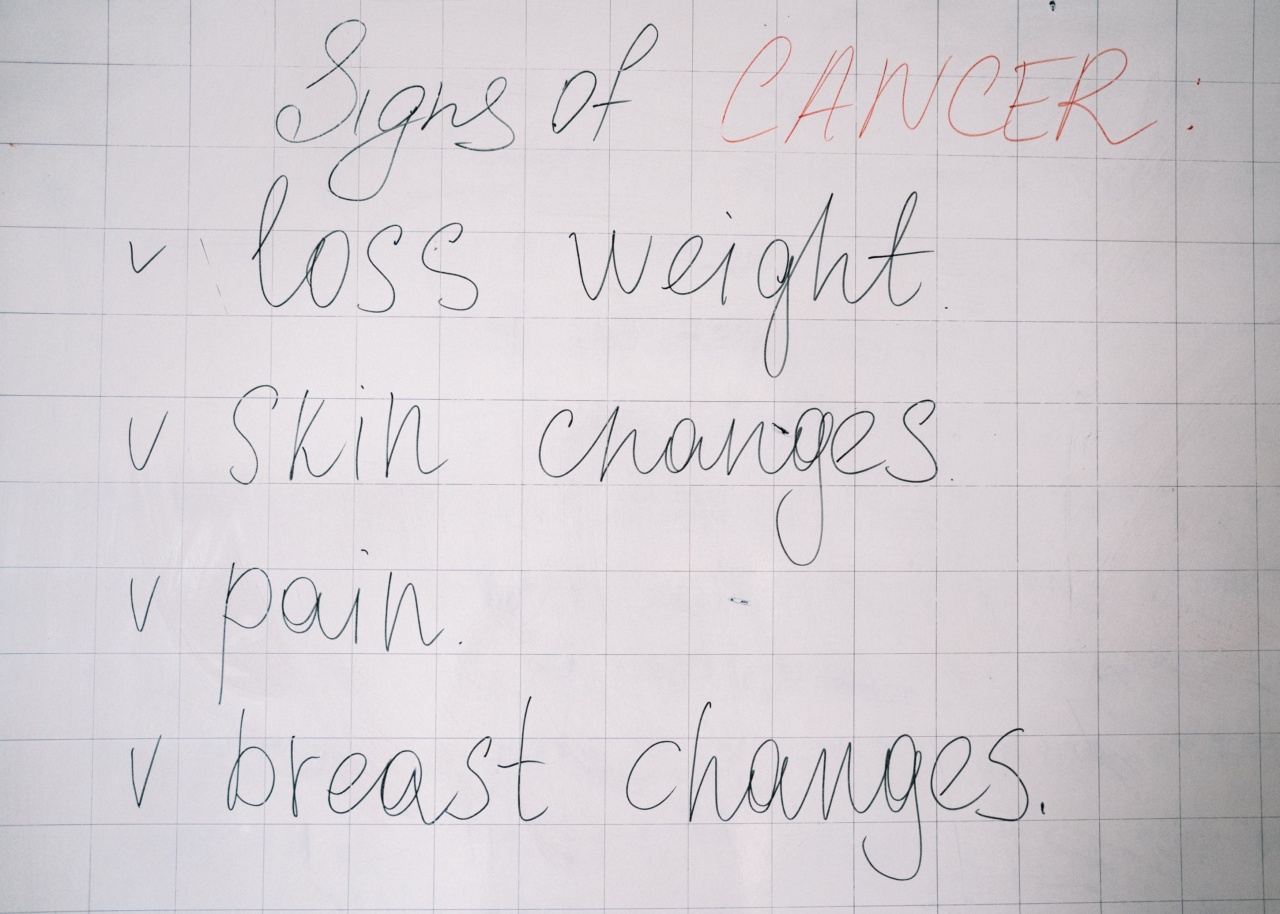Leukemia is a type of cancer that affects the blood and bone marrow. It occurs when the body produces an excessive number of abnormal white blood cells, which are the cells that help fight infections.
In leukemia, these abnormal cells don’t function properly, and they crowd out healthy blood cells. Leukemia can develop in both adults and children, and it is important to be aware of the early symptoms and warning signs so that it can be detected and treated early.
Common Types of Leukemia
There are four main types of leukemia. These are:.
- Acute lymphoblastic leukemia (ALL)
- Acute myeloid leukemia (AML)
- Chronic lymphocytic leukemia (CLL)
- Chronic myeloid leukemia (CML)
ALL and AML are acute types of leukemia, which means they develop and progress rapidly. CLL and CML are chronic types of leukemia, which means they develop slowly over time.
Early Symptoms of Leukemia
Early symptoms of leukemia can be hard to spot, as they are also symptoms of many other conditions. However, if you experience any of the following symptoms, it is important to see a doctor for a diagnosis:.
1. Fatigue and Weakness
Feeling tired and weak is a common early symptom of leukemia. This is because leukemia affects the production of red blood cells, which transport oxygen throughout the body.
Without enough red blood cells, the body cannot get the oxygen it needs, which can lead to fatigue and weakness.
2. Frequent Infections
Leukemia affects the production of white blood cells, which are the cells that help fight infections. If you have leukemia, you may find that you are getting sick more often than usual, and that it takes longer for you to recover from infections.
3. Bruising and Bleeding
If you have leukemia, you may notice that you bruise and bleed more easily than usual. This is because leukemia affects the production of platelets, which are the cells that help the blood to clot.
Without enough platelets, the blood cannot clot properly, which can lead to bruising and bleeding.
4. Swollen Lymph Nodes
The lymph nodes are part of the immune system and help to fight infections. In leukemia, the abnormal white blood cells can accumulate in the lymph nodes, causing them to swell.
If you have leukemia, you may notice that your lymph nodes are swollen, particularly in your neck, armpits, or groin.
5. Night Sweats
Leukemia can cause night sweats, which are excessive sweating that occurs during the night. This can be a sign that your body is fighting an infection or other illness.
Warning Signs and Late Symptoms of Leukemia
If leukemia is left untreated, it can progress and cause more severe symptoms. Some warning signs and late symptoms of leukemia include:.
1. Shortness of Breath
If leukemia is left untreated, it can lead to anemia, which is a shortage of red blood cells. Anemia can cause shortness of breath, as the body is not getting enough oxygen.
This can occur even with light exercise or other activities that wouldn’t normally cause shortness of breath.
2. Unexplained Weight Loss
If you have leukemia, you may experience unexplained weight loss. This is because leukemia affects the metabolism, causing the body to burn calories faster than usual.
3. Abdominal Pain and Swelling
If leukemia progresses and affects the liver and spleen, it can cause abdominal pain and swelling. This can occur even if you haven’t eaten a large meal, and the pain may be severe.
4. Bone Pain
Leukemia can cause bone pain, as the abnormal white blood cells can accumulate in the bone marrow. The pain may be sharp or dull, and may be worse at night.
5. Headaches
If you have leukemia, you may experience headaches, which can be a sign that the cancer has spread to the central nervous system.
Conclusion
Leukemia is a serious condition that requires prompt diagnosis and treatment. If you experience any of the early symptoms of leukemia, it is important to see a doctor for a diagnosis.
By catching leukemia early, you can increase your chances of successful treatment and recovery.


























